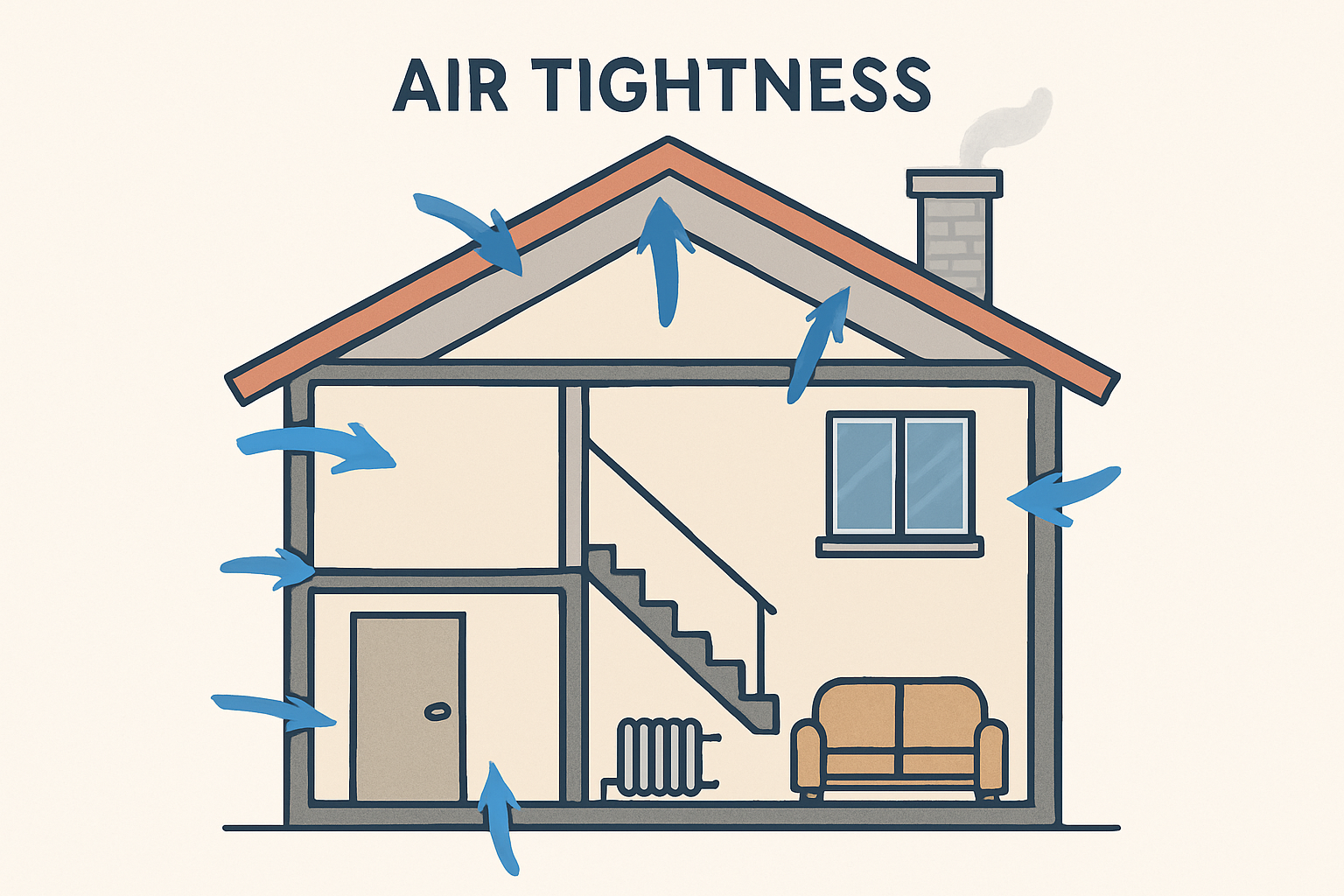
Air Tightness Testing
Air Tightness Testing (also known as air permeability testing or air leakage testing) is a crucial part of building compliance in the UK. It measures how much air escapes from a building through uncontrolled leaks in the fabric of the building envelope.
✅ Why It’s Required
Part L of the Building Regulations (England & Wales) mandates air tightness testing for new dwellings and
commercial buildings. It's essential to demonstrate energy efficiency by limiting heat loss through air leakage.
🏠 What It Involves
A blower door test is carried out: a fan is temporarily installed in a doorway to pressurise or depressurise the
building. Sensors measure the rate of airflow required to maintain pressure, revealing how ‘leaky’ the building is.
Test results are given in m³/h·m² @ 50Pa (cubic metres per hour per square metre at 50 pascals of pressure).
📉 Benefits
• Reduces heating and cooling costs
• Improves occupant comfort
• Enhances building durability
• Helps meet SAP/SBEM and EPC targets
🧱 Who Needs It?
• New build houses and flats
• Commercial properties over 500m²
• Extensions or refurbishments depending on compliance route
🛠️ Preparation Tips
• Seal all intentional openings (vents, extractor fans)
• Ensure doors and windows are properly installed
• Check for gaps in skirting, pipe penetrations, etc.